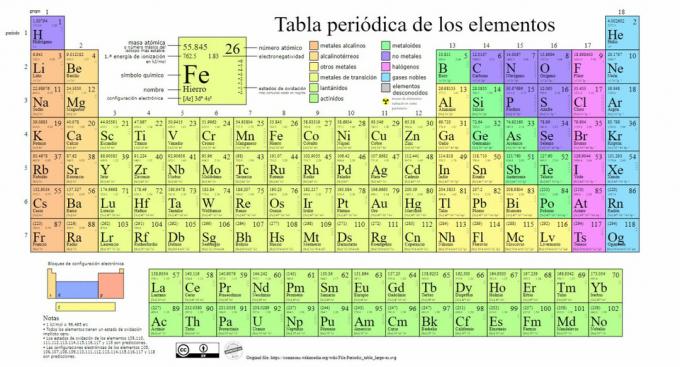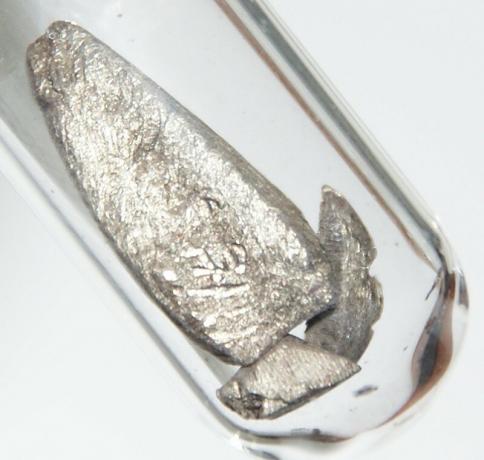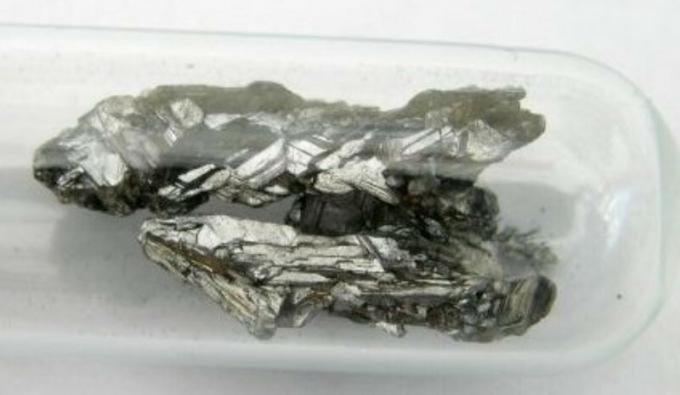The 10 types of chemical elements (explained and classified)
How many chemical elements must exist in the universe? This question still has a long way to go, since scientists are creating their own artificial chemical elements from time to time.
However, what we can answer to is how many types of chemical elements must exist, something that we will find out next.
- Related article: "The 11 types of chemical reactions"
The types of chemical elements
In nature we can find all kinds of substances. These substances are not usually found in their pure state, but are the result of the combination of different elements or materials that through different reactions, processes and periods of time have given rise to all kinds of matter. There is nothing in the universe that is not the result of the combination of atoms belonging to different types of chemical elements, which we will see in depth.
However, before looking at the types of chemical elements let's do a little review of high school science and remember what chemical elements are.
We call "chemical element" matter that is composed of the same type of atom, that is, a substance that is atomically pure.
Chemical elements cannot be decomposed into simpler ones and are classified in the periodic table of the elements as pure materials of the universe.But beware! We must not confuse elements with simple substances, since in certain cases two or more atoms of the same element can compose molecules grouped in different ways that cause some of the physical properties of the element in question to vary, these cases being the isotopes. For example, diamond and carbon are substances made from the chemical element carbon (C). but that is organized in different ways and results in two completely different materials.
Carl sagan He said that we are stardust reflecting on stars. This beautiful phrase is not a mere metaphor, but a scientific fact. Chemical elements are formed, as far as we know, inside stars being the result of complex fusion and atomic fission processes that generate increasingly heavier elements, the result of a process called nucleosynthesis.
Most of the known elements can be obtained from nature, found spontaneously or forming compounds with other elements such as uranium (U), carbon (C), silicon (Si), silver (Ag) or gold (Au). Others, on the other hand, have been manufactured in laboratories such as americium (Am), berkelium (Bk) or curium (Cm). Whatever its method of obtaining it or if it is present in nature, depending on its properties, the chemical element in question will have some uses or others.
At present, some 118 chemical elements are known, although taking into account that humans have been able to manufacture new elements, it is a matter of time before the periodic table expands.
- You may be interested in: "The 2 types of electricity (explained)"
The main types of chemical elements
The main types of chemical elements are represented in the periodic table, a system of classification created by the Russian chemist Dmitri Mendeleev (1834-1907) who laid its foundations in 1869. Chemical elements are visually ordered based on their properties and characteristics.

Over time and as chemistry made important scientific discoveries, this table would be expanded consecutively, reaching the form it has today with the 118 elements known so far.
At present, in this table we can find the following types of chemical elements:
1. Metals
Metals are chemical elements that generally contain between one and three electrons in the last orbit of their atom, electrons which can be easily transferred making them conductors of heat and electricity.
Metals are usually malleable and ductile, with a characteristic shine whose intensity depends on the movement of the electrons that make up their atoms. Most of the time, metals are solid at room temperature, except for mercury.
Among the metals we find gold (Au), silver (Ag), copper (Cu) and aluminum (Al) whose physical characteristics make them magnificent conductors of electricity, although their presence in nature is very varied, reflected in the difference between their weights.
It is believed that 75% of the chemical elements existing in nature are metals, while the remaining 25% would be made up of noble gases, metalloids and other types.
There are classifications within this category, finding actinides, lanthanides, transition metals, alkali metals, alkaline earth metals and other metals.
- Related article: "10 foods high in Zinc"
1.1. Lanthanides
Lanthanide elements are found in deposits made up of many minerals. They are white metals that oxidize easily when in contact with air. Among them we find Lanthanum (La), Promethium (Pm), Europium (Eu) and Ytterbium (Yb).

- You may be interested in: "The 5 types of chemical bonds: this is how matter is composed"
1.2. Actinides
All isotopes of actinides are radioactive. Among them we find actinium (Ac), uranium (U), plutonium (Pu) and einsteinium (Es).
1.3. Transition metals
Transition metals are located in the central part of the periodic system. Its main characteristic is that have electronic configuration of the "d" orbital partially filled with electrons.
In this group there are substances of all kinds and, according to its broadest classification, it would correspond to chemical elements from 21 to 30, from 39 to 48, from 71 to 80 and from 103 to 112, being a total of forty and among them we would find vanadium (V), ruthenium (Ru), silver (Ag), tantalum (Ta) and lawrencio (Lr).

1.4. Alkali metals
The alkali metals is a group of six elements composed of lithium (Li), sodium (Na), potassium (K), rubidium (Rb), cesium (Cs) and francium (Fr). They are shiny, soft metals, highly reactive at normal temperature and pressure and easily lose their outer electron, located in their "s" orbital.
1.5. Alkaline earths
The alkaline earth metals are a group of elements in which we find beryllium (Be), magnesium (Mg), calcium (Ca), strontium (Sr), barium (Ba) and radium (Ra). Its name comes from the name given to its oxides, "earths", which have basic or alkaline properties.
Alkaline earths they are harder than alkaline, shine and are good electrical conductors. They are less reactive than alkaline ones and act as good reducing agents. They have the ability to form ionic compounds and they all have two electrons in their outermost shell.

1.6. Other metals
The category "other metals" is a type of substances that are found here because you don't really know where to put them.
They are metallic elements located in the periodic table together with the metalloids, within the p block. They tend to be soft with low melting points. Among them are aluminum (Al), indium (In), tin (Sn) and bismuth (Bi) among others.

2. No metals
Nonmetals generally possess between five and seven electrons in their last orbit, a property which makes that they gain electrons instead of giving them up and, thus, they manage to have eight electrons that thus stabilize them as atoms.
This elements they are very poor conductors of heat and electricity. Added to this, they do not have a characteristic shine, are not very malleable, not very ductile and are very fragile in the solid state. They cannot be rolled or stretched, unlike metals.
They are mostly essential for biological systems, since they are present in the organic compounds, such as sulfur (S), carbon (C), oxygen (O), hydrogen (H) and iodine (I).

- Related article: "The 20 types of precious stones (described and with pictures)"
3. Metalloids
As their name suggests, metalloids are an intermediate classification between metals and non-metals that have properties of both groups. This is due to the fact that they have four atoms in their last orbit, an intermediate quantity to that of metals and non-metals.
These chemical elements conduct electricity only in one direction, not allowing it to be done in the opposite direction as it does in metals. An example of this is found in silicon (Si), a metalloid used in the manufacture of semiconductor elements for the electronics industry thanks to this property.
Other metalloids are: boron (B), arsenic (As), antimony (Sb) and polonium (Po).

4. Halogens
Halogens are a group of six elements that they tend to form molecules composed of two atoms (diatomic) very chemically active due to their electronegativity.
These substances usually appear in the form of ions, that is, electrically charged molecules, which in this case are mononegative, highly oxidizing. This means that halogens are caustic and corrosive substances.
The halogens are: fluorine (F), chlorine (Cl), bromine (Br), iodine (I), astate (At) and tenese (Ts).

5. Noble gases
The noble gases are a group of seven whose natural state is gaseous. They usually appear in the form of diatomic molecules of very low reactivity, that is, they do not react with other elements composing other substances and, for this same reason, they are known as inert gases. This is because in its last orbit there are the maximum number of electrons possible for that level, eight in total.
This select group of elements is composed of helium (He), neon (Ne), argon (Ar), krypton (Kr), xenon (Xe), radon (Rn) and oganeson (Og), formerly known as ununoctium.

